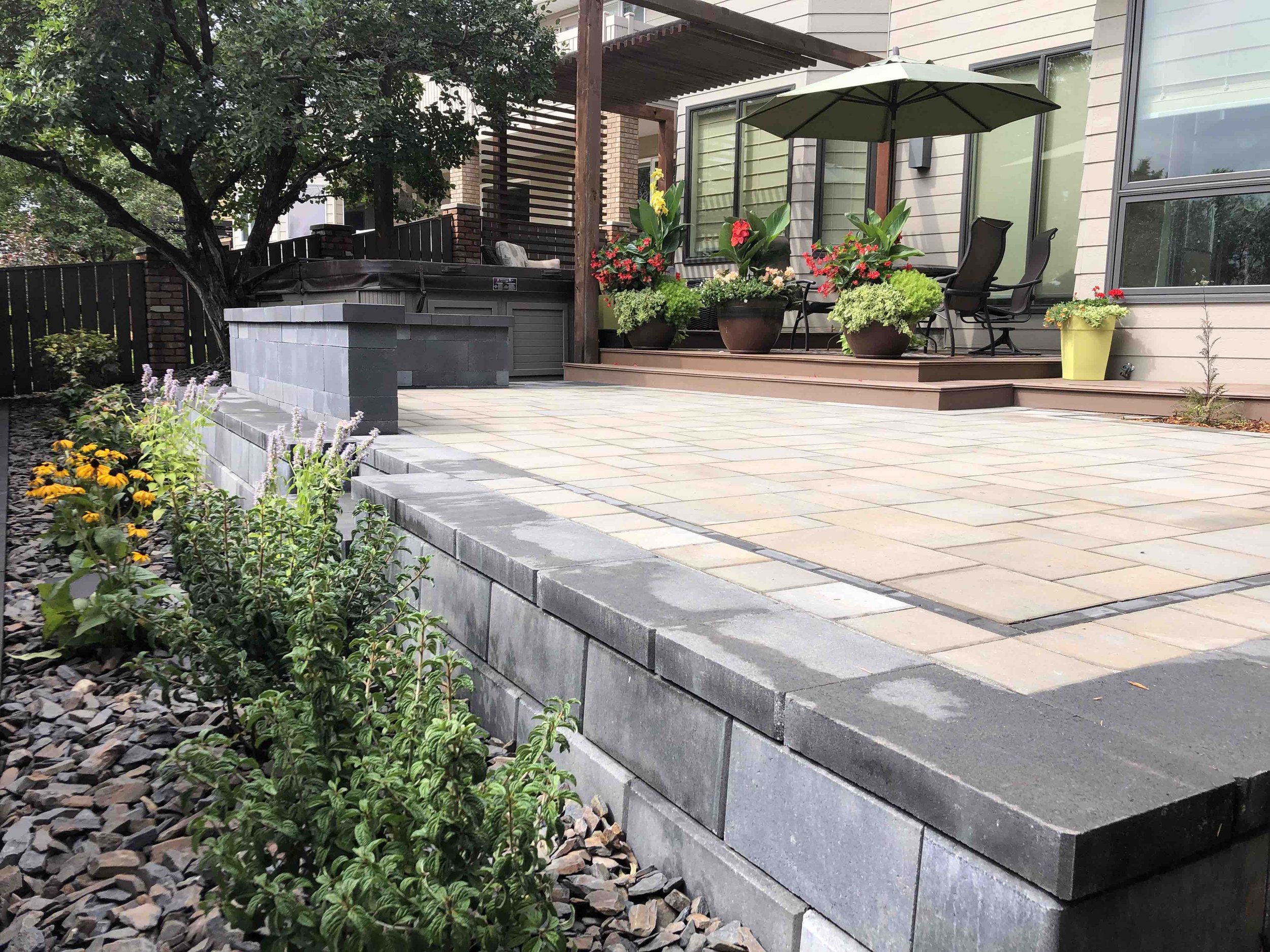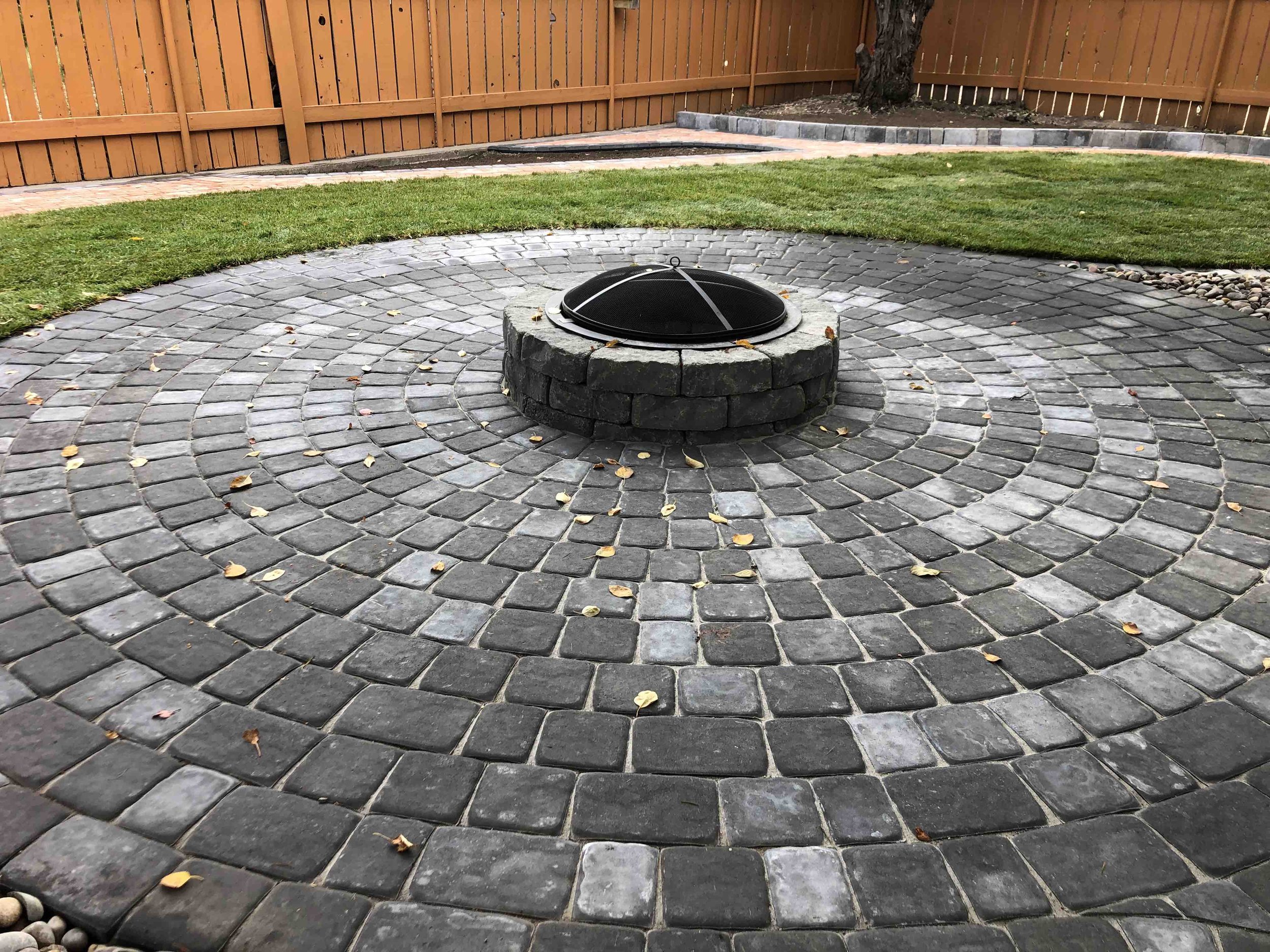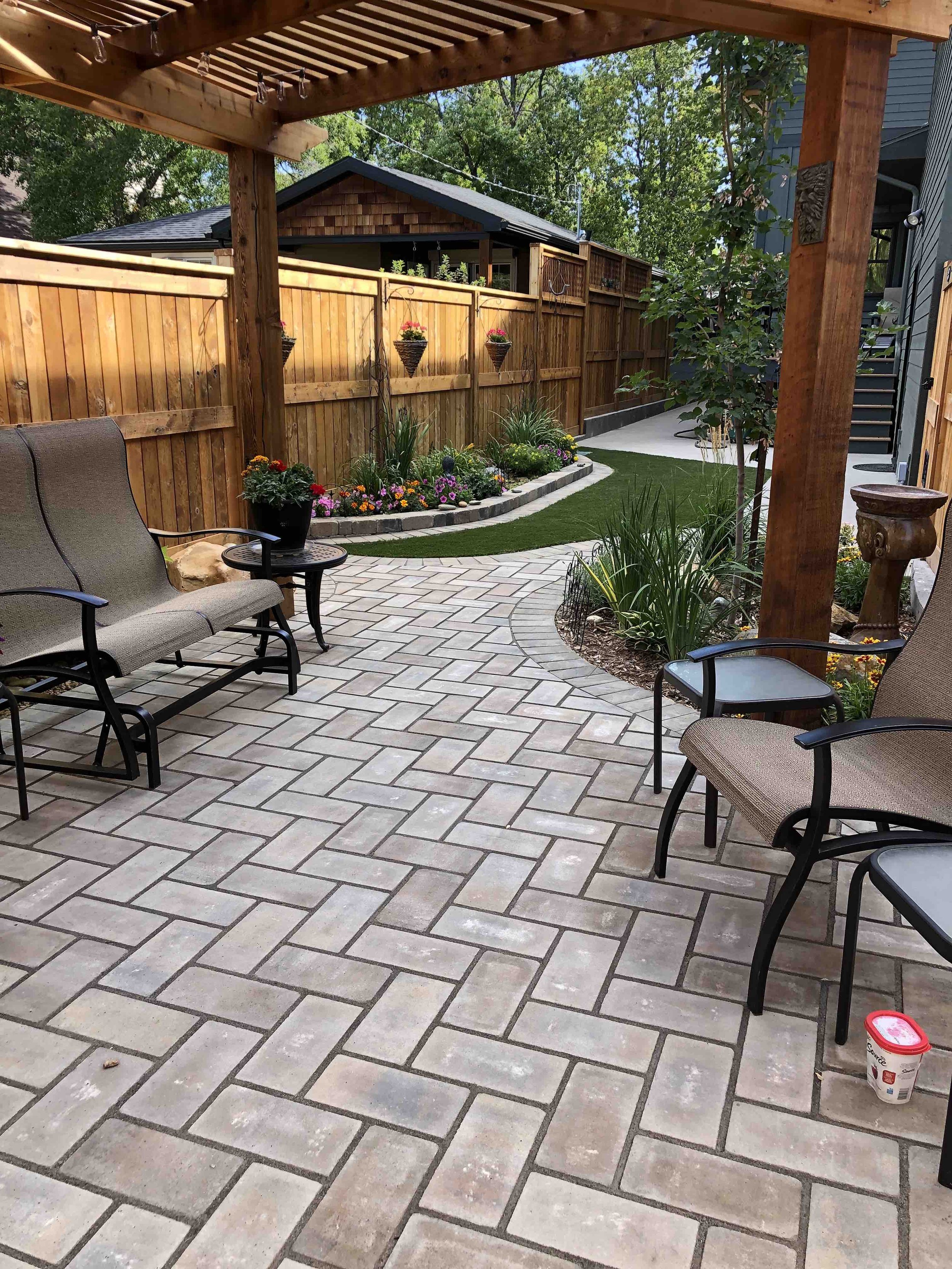Decks vs Patios
/Having “paving stone” as part of our corporate name, it’s probably not a surprise that we view patios as the better choice when it comes to the design and construction of an outdoor living space for your yard. However, don’t take our word for it! Here are some things to consider when making an unbiased decision between decks and patios:
The terms deck and patio are often mistakenly used interchangeably, but there are some distinct differences between these two types of surfaces. Regardless of how high off the ground they’re built, decks are always a suspended structure supported by posts or pillars of some type. Most often, they are framed from wood and covered with wood decking, composite, vinyl, or even porcelain tiles to form their surface.
Patios, on the other hand, will always have a solid foundation as they are generally low to the ground. They are most often constructed from either poured concrete or paving stone, although they can also be built of gravel, porcelain tiles and natural stone.
Cost:
When comparing the cost of constructing a deck versus a patio, decks usually come at a higher initial cost than patios mostly due to their more challenging construction. Their very nature of being suspended in the air can make them more difficult to construct and will require building permits whenever they are 2’ (0.6m) or higher above the surrounding grade (as would any patio).
Material costs for either patios or decks will vary considerably depending on the material you choose to build them from but are quite comparable, generally speaking, between the two types of outdoor living spaces. When considering life spans of decks and patios, though, patios are generally quite a bit cheaper since the materials and nature of their construction allow them to last longer than decks.
Maintenance:
Most often, patios are easier to maintain than decks because of the materials most commonly used to construct them. Chances are that a patio will be constructed of some type of concrete product, either poured-in-place or as a paving stone. These materials are super durable and will last many years without fear of rotting and will not need to have the regular painting or staining done that wooden decks may require.
With most patios being built into the surrounding landscape, weeds may be an issue that decks don’t have. However, doing maintenance on a surface that is near the ground versus one that is 8’ or more above the ground may be a deciding factor for some.
Design:
When it comes to aesthetics and functionality in your landscape, both decks and patios have positives and negatives associated with them depending on the landscapes they’re in. Patios have their limitations when it comes to the grade you’re placing them on. Generally speaking, they require a level ground whereas decks can be suspended over virtually any topography. However, when combined with retaining walls, patio use can be expanded immensely to include various levels and placement on slopes but at a much higher cost.
Obviously, a patio will not work to create a living space off of a second storey or above a walkout basement. Your only option for that would be a deck. And, decks will be your best choice for creating a raised platform to take advantage of any surrounding views you may have from your yard. But, in most new neighbourhoods, perching your outdoor living space in the air above fences and immature planting material is akin to being on a stage for all of your neighbours to see! The nice thing about a patio, especially in many new yards, is that they can be nestled near the ground, out of the sight of nosey neighbours and protected from the wind at the same time.
In terms of design, patios can be much more interesting than most decks since the materials used to construct them often have the ability to easily make curves and interesting shapes, allowing them to fit seamlessly into virtually any landscape. Decks, on the other hand, are most often constructed from rigid materials that are less pliable limiting their design possibilities.
Since decks are often more than 2’ above the ground, their location within a landscape may also be limited by municipal bylaws. For example, in Lethbridge, decks must be at least 4’ away from side property lines and accessory buildings, and 16.5’ away from rear property lines. The placement of patios within 2’ of the ground will not be limited by these rules.
Another thing to consider regarding the aesthetics and functionality of a deck, especially one that is within 3-4’ of the ground, is how the space beneath is treated. Typically, when a deck is off the ground but not high enough to walk under, the space becomes an eyesore, constantly collecting blown-in dirt and garbage. These spaces can also become a spot for local wildlife and cats to frequent or even live. Unless, of course, some type of skirting is placed around the perimeter, adding another cost to an already expensive project.
Decks and patios can often be used together in landscape designs since they both have their strengths. But, if you’re looking to add an outdoor living space in your yard that will be durable and easy to maintain, will provide you with privacy and shelter from our Southern Alberta winds, and will look great for years to come, ditch the deck and put in a patio!









